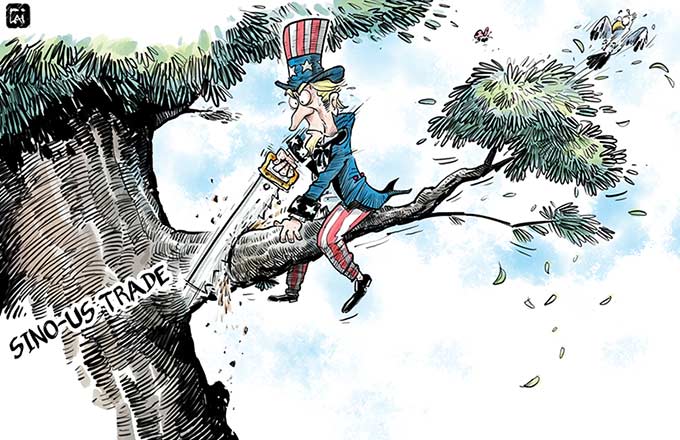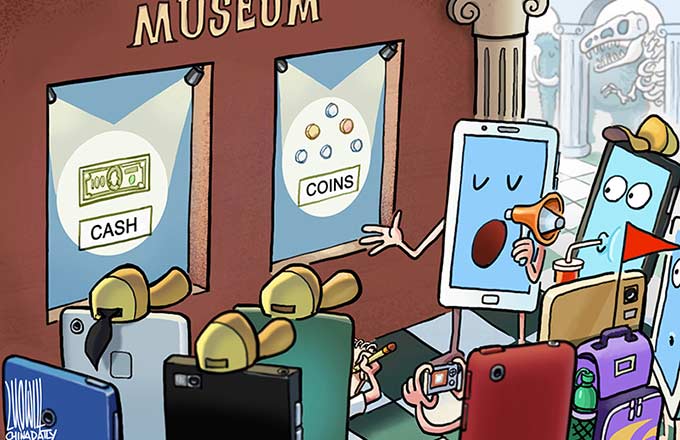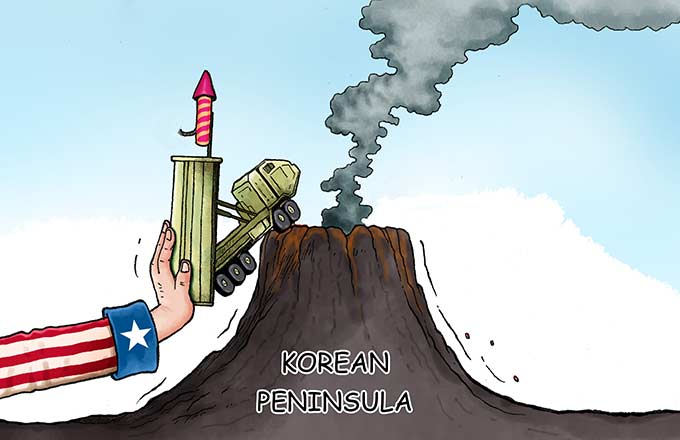The strange fall of the US dollar
 |
|
Figure US Dollar Index, 1970-2017 |
As the exuberant Trump White House has been mugged by realities, US dollar is plunging to record lows.
What a difference a year makes! Last November, US dollar hit its 13-year high. According to the US Dollar Index, which measures the currency against a basket of six other major currencies, the greenback soared to a peak of 103. By early August, US dollar is struggling around less than 93.
Recently, the Index has climbed to 93.5, after a "strong jobs report" raised expectations of an interest rate hike later this year. Yet, job gains in July were driven mainly by low-paying part-time jobs. That will increase the Fed’s interest, but may not result in a rate hike unless wage gains translate into inflation.
Where is the dollar going?
Great expectations, harsh realities
In the fourth quarter of 2016, when the US dollar still seemed near-invisible, it was driven by the triumphant post-election exuberance and the associated bond yields (and the Fed’s anticipated rate hike), and expectations of Trump’s fiscal expansion (infrastructure stimulus).
Yet, already during the transition, the effort of the US intelligence communities to subdue Trump’s Russia policy began to erode faith in a strong US dollar. While the Fed had to limit rate hikes and prolong the pause between them, Trump’s fiscal ambitions became constrained by the ongoing Mueller Russia investigation. The White House is divided, and so is the Republican House and Senate.
Since December 2016, US dollar has failed to appreciate, despite three hikes by the Federal Reserve. Meanwhile, US consumer prices have plunged from 2.6% in January back to 1.6% today.
Neither Trump nor the US explains everything about the dollar’s fall. The Dollar Index is sensitive to the fluctuations of its largest constituent currencies comprise it, particularly the euro (58% weight). Some dollar losses could be attributed to the euro’s strengthening, which began with Macron’s election triumph in France that eased concerns about the EU break-up. And as the European Central Bank (ECB) gave an upbeat EU growth and inflation outlook, euro’s rise continued.
But while Chancellor Merkel’s expected election win in the fall will support the euro, Macron’s approval rating is falling, German carmakers face rising challenges, Italian elections and UK Brexit loom ahead, along with the ECB’s exit from quantitative easing and possible rate hikes in 2018.
Short-term resilience, longer-term erosion
In the coming months, US dollar could recover if the White House can get its act together and the Republican lawmakers come up with some legislative success – and if the Fed can execute new hikes without adverse effects.
In reality, risks continue to prevail. Instead of fostering growth, the White House is about to ignite trade friction with China regarding intellectual property rights. Trump has already alienated his European NATO partners by declaring US steel imports a "national security issue," which will cause economic damage to Germany, Canada and other major steel importers in America.
If trade friction will spread from steel to aluminum, semiconductors and other areas, world trade is likely to take a new hit, as US "trade defenses" will unleash waves of retaliation from Europe to Asia. In turn, Washington’s Russia sanctions will intensify a new Cold War and has already resulted in Russian retaliation. For months, EU leaders have warned Washington about such sanctions.
In this odd status quo, it is easy to be distracted by short-term fluctuations. Yet, if one takes a perspective of three-to-four decades, the evolution of the US dollar seems continuous. Since the 1970s and the eclipse of the gold standard, three periods of dollar surges have been followed by associated periods of decline.
Despite the continued international strength of the US dollar, each of these periods reflects a steady relative erosion of the dollar, from its all-time high of 165 in 1985 to barely 120 in the early 2000s and to 103 last fall (see the black trend line in the US Dollar Index Figure).
In the coming months, US dollar could still prove resilient, except for uncertainty and volatility, especially if the Trump administration finds itself cornered. In the longer-term, US dollar’s recent decline is consistent with its longstanding relative erosion.
Dr Steinbock is the founder of Difference Group and has served as research director at the India, China and America Institute (USA) and visiting fellow at the Shanghai Institutes for International Studies (China) and the EU Center (Singapore).
The original, shorter version was released by Shanghai Daily on August 10, 2017.



















